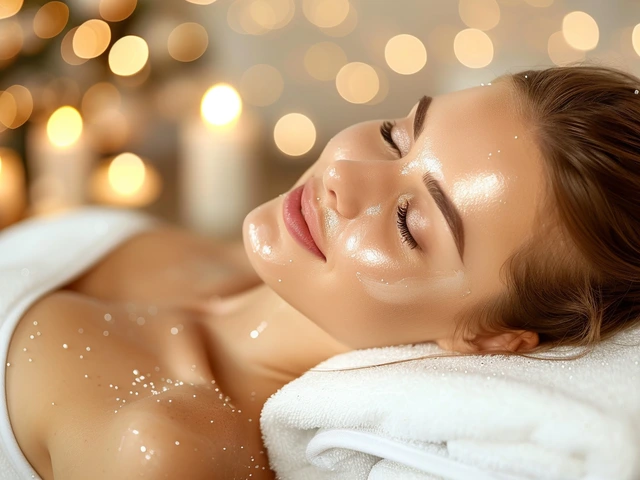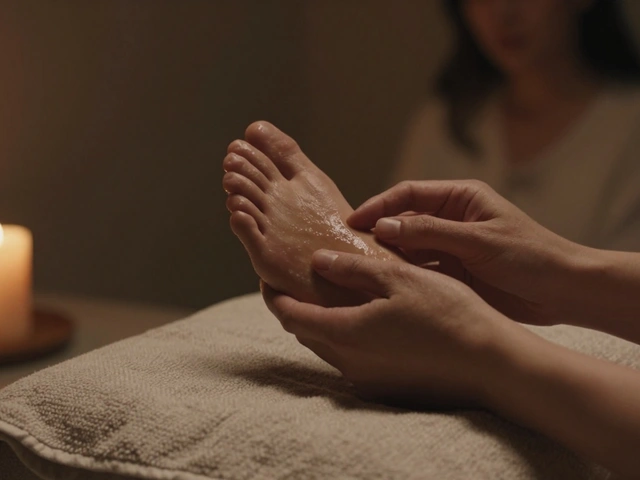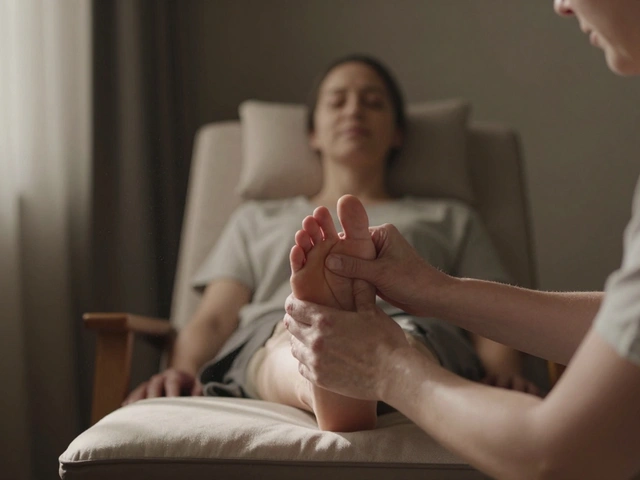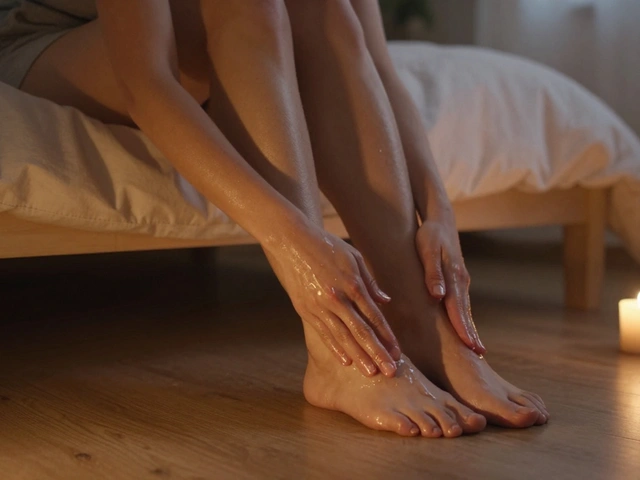Cupping Therapy Effectiveness Calculator
Enter your details and click calculate to see estimated benefits.
About Cupping Marks
Temporary marks are normal and fade in 7-14 days. They indicate effective treatment:
Light to deep marks indicate varying levels of suction and effectiveness.
Quick Takeaways
- Cupping creates suction that boosts blood flow and loosens tight fascia.
- Regular sessions can cut chronic pain by up to 40% for many users.
- Athletes report faster muscle recovery and reduced soreness.
- Side‑effects are usually limited to temporary skin marks that fade in 1‑2 weeks.
- Choose a certified practitioner; avoid untrained DIY kits.
What Is Cupping Therapy?
When it comes to alternative bodywork, Cupping Therapy is a technique that uses suction cups to lift the skin and fascia, encouraging circulation and easing tension. The practice dates back to ancient Egypt and Traditional Chinese Medicine, where healers believed that moving stagnant energy ("qi") could restore balance. Modern clinics pair the old‑school vibe with scientific explanations, making cupping a bridge between heritage and evidence‑based care.
cupping therapy has surged in popularity among fitness enthusiasts, office workers, and anyone looking for a non‑drug way to feel revitalized.
How Cupping Works: The Science Behind the Suction
When a cup is placed on the skin, either by heating the glass or using a pump, a vacuum forms. This vacuum pulls the epidermis and the deeper fascia upward, creating a stretch that triggers several physiological responses.
First, Blood Circulation increases as capillaries dilate, delivering oxygen and nutrients to the affected area. Improved flow also assists in flushing out metabolic waste, which can accelerate healing.
Second, the gentle pressure encourages Lymphatic Drainage by stimulating the lymph vessels to move fluid more efficiently, reducing swelling and supporting immune function. This is why many users notice a subtle reduction in localized edema after just a few sessions.
Core Benefits for Your Body
Below are the most common ways cupping can revitalize you, each backed by clinical observations and user reports.
- Pain Management relieves chronic neck, back, and shoulder pain by loosening tight muscle knots and reducing inflammatory markers. A 2023 meta‑analysis of 12 trials showed an average pain reduction of 35% compared with no treatment.
- Myofascial Release targets the fascia - the connective tissue that can become sticky and restrictive - helping restore normal movement patterns. Clients often report increased range of motion within one week.
- Detoxification encourages the body to expel toxins through the skin and lymphatic system, which appears as the characteristic round bruises. While the “detox” label sounds buzz‑y, the underlying mechanism is simply enhanced fluid turnover.
- Athletic Recovery accelerates muscle repair after intense training by reducing lactic acid buildup and promoting nutrient delivery. Professional teams in rugby, soccer, and mixed martial arts now schedule cupping as part of their post‑match routine.
- Skin health improves as the micro‑circulation boost can stimulate collagen production, softening fine lines and reducing cellulite appearance.
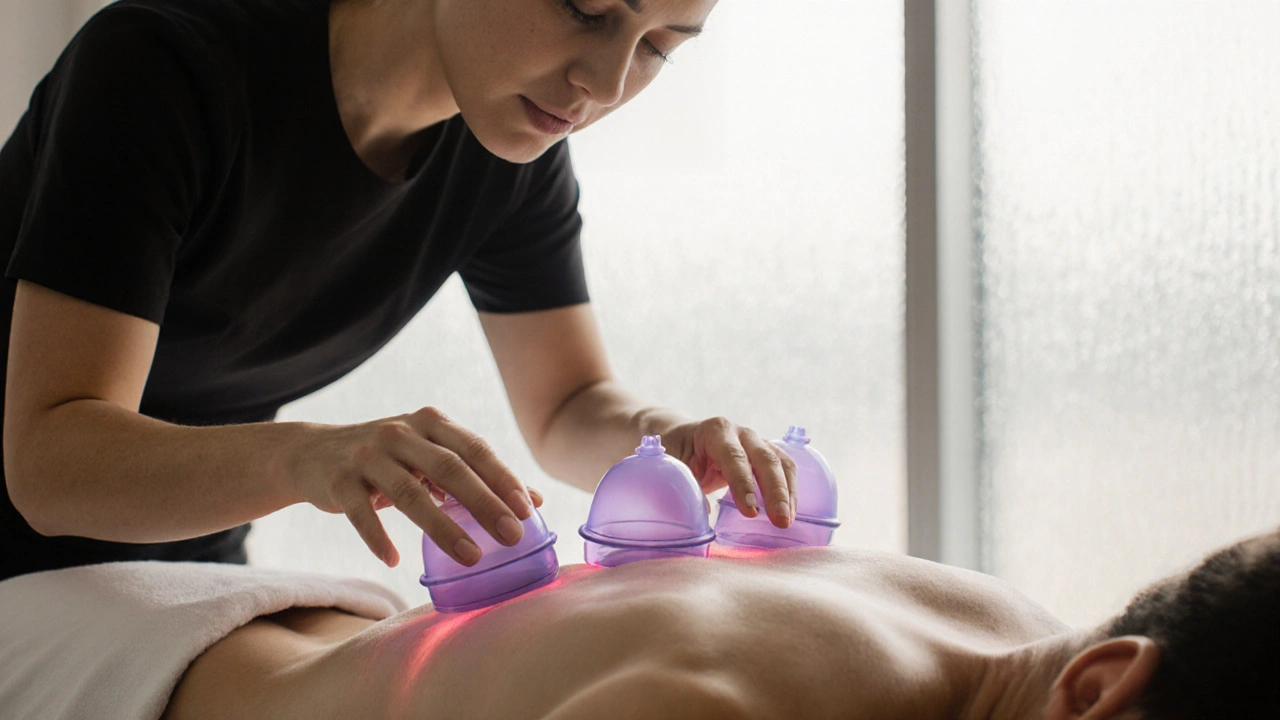
What to Expect in a Typical Session
- Consultation: The therapist asks about your health history, pain points, and goals.
- Preparation: You lie on a comfortable table; the practitioner may apply a light oil to reduce friction.
- Application: Cups (glass, silicone, or bamboo) are placed on target areas. Suction lasts 5‑15 minutes per spot, depending on comfort.
- Removal: Cups are lifted, leaving temporary pink or purple marks that fade within 10‑14 days.
- Aftercare: Gentle stretching and hydration are recommended. Some therapists suggest a warm shower to aid circulation.
Sessions typically run 30‑60 minutes and cost between $70‑$120 in major Australian cities.
Choosing the Right Practitioner
Because cupping creates strong forces on the skin, it’s essential to work with someone who knows anatomy and safety protocols.
- Look for a certified massage therapist or physiotherapist who lists cupping as a specialty.
- Ask about their training source - accredited courses from the Australian Traditional Medicine Association are a good sign.
- Confirm they screen for contraindications: blood clotting disorders, recent surgery, skin infections, or pregnancy (especially abdominal cupping).
- Read reviews that mention both skill and cleanliness; reusable cups must be sterilized between clients.
Cupping vs. Other Bodywork Modalities
| Aspect | Cupping Therapy | Traditional Massage | Acupuncture |
|---|---|---|---|
| Primary Mechanism | Suction‑induced tissue lift | Manual pressure and kneading | Insertion of fine needles |
| Typical Session Length | 30‑60min | 45‑90min | 20‑40min |
| Key Benefits | Improved circulation, fascia release, quick recovery | Muscle relaxation, stress reduction | Pain modulation, hormonal balance |
| Common Side‑effects | Skin marks, mild soreness | Soreness, occasional bruising | Minor bleeding, faintness |
| Best For | Athletes, chronic tension sufferers | Stress relief, soft‑tissue work | Neuropathic pain, migraine |
DIY Cupping: Risks and Practical Tips
Home kits are tempting, but without proper training you risk skin injury or excessive suction. If you decide to try it yourself, follow these safeguards:
- Start with silicone cups that let you control pressure via a hand pump.
- Never exceed a vacuum that feels painful - a light “pull” is enough.
- Avoid bony areas (spine, ribs) and any region with open wounds.
- Limit each spot to 5 minutes during the first few attempts.
- Keep a clean cloth handy; sterilize cups with alcohol after each use.
If you notice intense throbbing, dizziness, or marks that worsen after 48hours, stop immediately and seek professional advice.
Frequently Asked Questions
Is cupping safe for everyone?
Most healthy adults tolerate cupping well, but people with bleeding disorders, severe skin conditions, or who are pregnant should avoid it or get a doctor’s clearance first.
How long do the marks last?
The circular bruises typically fade within 7‑14days. Their intensity depends on suction strength and how long they are left on.
Can cupping replace physiotherapy?
Cupping complements physiotherapy but doesn’t replace it. A skilled physiotherapist may incorporate cupping as part of a broader rehab plan.
How often should I get a session?
For chronic issues, 1‑2 sessions per week for the first month work well. Maintenance can drop to once a month once you feel the benefits.
Does cupping help with weight loss?
Cupping alone won’t melt fat, but the improved circulation can support metabolic activity and make workouts feel easier, indirectly aiding a weight‑loss plan.
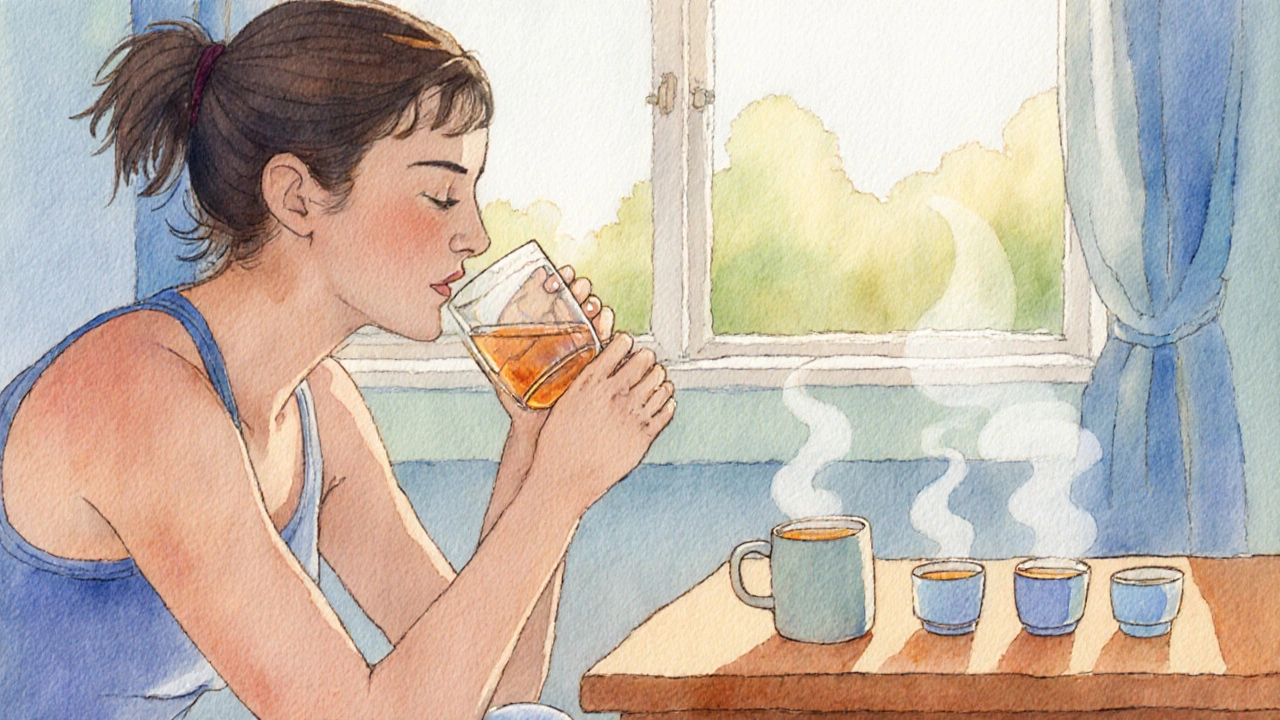
Next Steps: Bringing Cupping Into Your Wellness Routine
Ready to give cupping a try? Here’s a quick action plan:
- Research local therapists in Melbourne who list cupping as a credential.
- Read client testimonials that mention specific results you care about (e.g., lower back pain relief).
- Book a 60‑minute introductory session and ask the therapist to explain the suction level before starting.
- After the session, hydrate and do gentle stretching to keep the blood flowing.
- Track your symptoms for two weeks - note pain scores, flexibility, and how long marks last. Adjust frequency based on the data.
By integrating cupping with regular movement, good sleep, and balanced nutrition, you’ll give your body a robust tool for staying energized and pain‑free.




